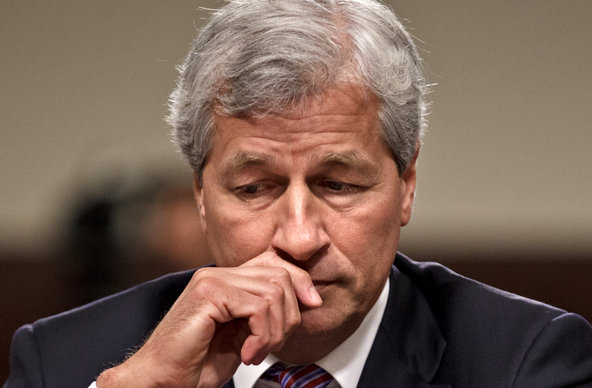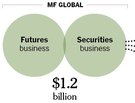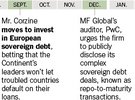 J. Scott Applewhite/Associated PressAfter the board of JPMorgan Chase halved the salary of Jamie Dimon, the chief executive, he said, “I respect their decision.”
J. Scott Applewhite/Associated PressAfter the board of JPMorgan Chase halved the salary of Jamie Dimon, the chief executive, he said, “I respect their decision.”
Shortly after the markets closed on Tuesday afternoon, an emissary from JPMorgan Chase’s board of directors walked two flights down to the 48th-floor corner office of the bank’s chief executive, Jamie Dimon, to deliver a stark message. The board had voted to slash Mr. Dimon’s annual compensation for 2012 by half.
At first blush, the move appeared to be a stinging rebuke of Mr. Dimon for his failures of leadership that contributed to the bank’s multibillion-dollar trading loss last year.
But the pay cut was actually a message from the board to regulators and worried investors that it was a strong watchdog over the nation’s largest bank, according to several people with knowledge of the matter.
Related Links
After facing criticism for its lax oversight, the board wanted to assert its position as a check on top management, according to the people, who declined to be named because the discussions were not public.
Mr. Dimon, who was the highest paid chief executive at a large bank in 2011, was unfazed when he heard the news. On Wednesday, Mr. Dimon said the board “had a tough job” in assessing how to reduce his total compensation for the year. He called the trading episode an “embarrassing mistake” and said, “I respect their decision.”
The decision came after back-to-back board meetings earlier this week where the head of the board’s compensation committee, Lee R. Raymond, the former chief executive of Exxon Mobil who is known for his no-nonsense style, made a compelling pitch to his fellow directors. The group, Mr. Raymond argued, needed to take swift, decisive action.
While a few members were initially skittish about the depths of the proposed cuts, the board voted unanimously to reduce Mr. Dimon’s pay to $11.5 million from $23.1 million a year earlier, according to the people. The directors also voted to release the results of internal investigations into the trading losses, which largely fault other top executives for the problems.
The extent of the cut took some JPMorgan executives by surprise when news of the compensation was disclosed on Wednesday along with the bank’s earnings, which surged to an annual record of $21.3 billion.
“Mr. Dimon bears ultimate responsibility for the failures that led to losses,” the board said in a statement. It added that upon learning the extent of the losses, he “responded forcefully.”
Still, the trading losses, which have swelled to more than $6 billion, have cast a long shadow over the board and management of the bank. Many of JPMorgan’s hallmarks that Mr. Dimon has trumpeted, from its deft management of risk to a deep bench of executive talent, have been partially undercut by the trading fiasco and ensuing upheaval.
Despite the board’s move on pay, some federal regulators are skeptical that the directors have prowess to adequately police risk, according to several current and former regulators with knowledge of the matter. Mr. Dimon, 56, who successfully steered the bank through the turbulence of the 2008 financial crisis relatively unscathed, still maintains a tight grip on the bank.
Some federal regulators worry that the board, which largely exonerated themselves in their internal investigation of the losses, cannot sufficiently push back against the hard-charging Mr. Dimon. Others, the regulators said, are concerned that the directors lack the financial acumen to rein in risky activities.
At the time of the losses, the board’s risk committee had three members, a smaller group than many of its major Wall Street rivals. Also troubling, the regulators said, the three included executives with little banking experience: the president of the American Museum of Natural History, Ellen V. Futter, and David M. Cote, the chief executive of the manufacturer Honeywell. Since the losses were disclosed, Timothy P. Flynn, formerly the chairman of the auditing firm KPMG, joined the risk committee.
Joseph Evangelisti, a JPMorgan spokesman, said, “This is the same board that brought us through the worst financial crisis in our history with flying colors.”
Since revealing the trading losses in May from a soured bet on complex credit derivatives, Mr. Dimon has exerted his powerful influence over the shape and direction of the bank. He has reshuffled the upper echelons of its management, claiming the jobs of some of his most trusted lieutenants. Two notable casualties are Douglas L. Braunstein, who ceded his role as chief financial officer in November, and Barry L. Zubrow, a former chief risk officer, who resigned as head of regulatory affairs late last year. Mr. Braunstein is a vice chairman reporting to Mr. Dimon.
Adding to the turmoil at the top of the bank, Ina R. Drew resigned as head of the chief investment office shortly after the trading losses were announced. Her precipitous fall was followed this year by the departure of James E. Staley, once considered a potential heir to Mr. Dimon.
To replace them, Mr. Dimon has elevated a group of younger executives, most of whom are in their 40s. Some bank analysts and executives at JPMorgan worry that the group does not yet have the institutional knowledge or experience of their more seasoned predecessors, according to several people with knowledge of the matter.
At a conference in San Francisco earlier this month, Mr. Dimon called the current group of executives “the strongest leadership team we have ever had in place.” He mixed his praise, however, with a sharp criticism of others at the bank in the aftermath of the trading losses. “Instead of helping, they were running around with their head chopped off,” he said. Some “acted like children” and wondered “What does this mean for me personally? How’s my reputation?”
At the same time, Mr. Dimon has emerged relatively unscathed. While critical of Mr. Dimon, an internal report, led by Michael J. Cavanagh, a head of the corporate and investment bank, leveled its most scathing attacks on the executives who directly oversaw the London traders who made increasingly outsize wagers in the bank’s chief investment office. “Responsibility for the flaws that allowed the losses to occur lies primarily with C.I.O. management,” the report, which was released on Wednesday, said. Also ensnared are Mr. Zubrow and Mr. Braunstein.
The cuts target Mr. Dimon’s bonus compensation. While his salary remained the same from a year earlier at $1.5 million, his bonus was whittled down to $10 million, paid out in restricted stock.
Still, Mr. Dimon has accumulated much wealth in his years at the bank. He owns bank shares valued at $263 million.
Ben Protess contributed reporting.
A version of this article appeared in print on 01/17/2013, on page A1 of the NewYork edition with the headline: JPMorgan Uses Big Cut in Pay To Send Signal.
Article source: http://dealbook.nytimes.com/2013/01/16/morgans-board-uses-a-pay-cut-as-a-message/?partner=rss&emc=rss


